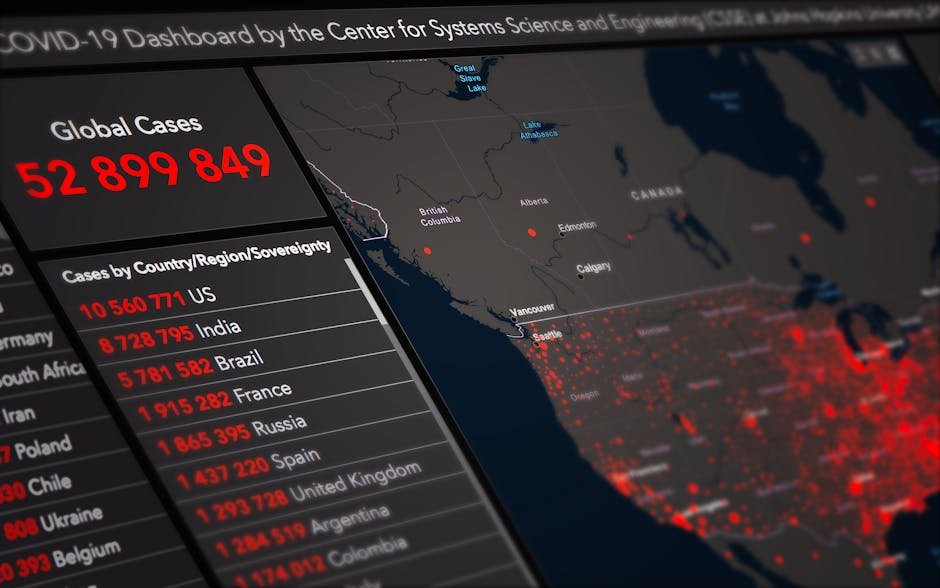Enterprise Data Mobility in 2025: Navigating the New Normal
The increasing mobility of enterprise data in 2025 presents both unprecedented opportunities and significant security challenges for organizations worldwide. This shift, driven by remote work trends and the proliferation of cloud-based services, necessitates a fundamental rethinking of data security and management strategies. Companies must adapt to a new paradigm where data flows freely across various devices and locations, demanding agile and robust security measures. This article explores the evolving landscape of enterprise data mobility in 2025, examining the key trends, challenges, and potential solutions.
The Rise of the Digital Nomad Workforce and its Data Footprint
The widespread adoption of remote and hybrid work models in 2025 has fundamentally altered the way enterprises manage their data. Employees access and manipulate sensitive information from diverse locations and devices, blurring the traditional boundaries of the corporate network. This decentralized data landscape increases the attack surface, making it more challenging to enforce consistent security policies. The resulting complexities require sophisticated solutions capable of securing data regardless of its location or access point.
Implications for Security Protocols
This shift necessitates a paradigm shift in security protocols. Traditional perimeter-based security measures are insufficient in a world where the “perimeter” is fluid and constantly evolving. Organizations must adopt zero-trust architectures, verifying every access request regardless of its origin. This involves robust multi-factor authentication, granular access controls, and continuous monitoring of user activity across all devices and platforms. Furthermore, strong encryption of data both in transit and at rest is paramount.
Cloud Adoption and Data Dispersion
The accelerating adoption of cloud-based services in 2025 contributes significantly to the dispersion of enterprise data. While cloud solutions offer scalability and flexibility, they also introduce new security considerations. Organizations must carefully vet cloud providers, ensuring they meet stringent security standards and comply with relevant regulations. Data breaches involving cloud services continue to be a major concern, underscoring the need for proactive security measures and robust incident response plans.
Data Sovereignty and Compliance Challenges
The geographical dispersion of data also raises concerns regarding data sovereignty and compliance. Organizations must navigate a complex web of international regulations and local laws pertaining to data privacy and security. Non-compliance can lead to significant penalties and reputational damage. Implementing effective data governance frameworks is critical to ensuring compliance and minimizing legal risks.
The Evolving Threat Landscape: Targeted Attacks and Data Breaches
Cybercriminals are increasingly targeting mobile and cloud-based data, exploiting vulnerabilities in access controls and security protocols. Advanced persistent threats (APTs) and ransomware attacks remain significant concerns. The sophistication of these attacks continues to grow, requiring organizations to invest in advanced threat detection and response capabilities. Proactive security measures, including regular security assessments and penetration testing, are crucial to identifying and mitigating potential vulnerabilities.
Key Security Vulnerabilities and Mitigation Strategies
- Lack of robust endpoint security: Many organizations still rely on outdated endpoint protection solutions, leaving their mobile devices vulnerable to attacks.
- Insufficient access controls: Weak or poorly configured access controls can grant unauthorized users access to sensitive data.
- Inadequate data loss prevention (DLP) measures: Failure to implement effective DLP measures can result in sensitive data being leaked or stolen.
- Lack of security awareness training: Employees often remain unaware of security risks and best practices, inadvertently compromising data security.
Addressing these vulnerabilities requires a multi-layered approach encompassing robust endpoint protection, granular access controls, effective DLP measures, and comprehensive security awareness training.
The Role of Artificial Intelligence (AI) in Data Security
AI and machine learning (ML) are playing an increasingly important role in enhancing data security in 2025. These technologies offer advanced threat detection capabilities, identifying and responding to malicious activity in real time. AI-powered solutions can also automate various security tasks, such as vulnerability scanning and incident response, freeing up security teams to focus on more strategic initiatives. However, the deployment of AI in security also introduces its own set of challenges, including the potential for bias and the need for careful oversight.
AI-Driven Threat Detection and Response
The use of AI for threat detection and response is revolutionizing cybersecurity. Machine learning algorithms can analyze vast amounts of data to identify patterns and anomalies indicative of malicious activity. This enables proactive detection of threats before they can cause significant damage. AI-powered solutions can also automate incident response, accelerating the process of containing and mitigating security breaches.
The Future of Enterprise Data Mobility: Strategies for Success
Successfully navigating the challenges of enterprise data mobility in 2025 requires a holistic approach encompassing technology, processes, and people. Organizations must embrace a zero-trust security framework, investing in advanced security technologies and implementing robust security protocols. Regular security assessments and penetration testing are essential to identify and mitigate vulnerabilities. Furthermore, comprehensive security awareness training for employees is paramount. Data governance frameworks must be established to ensure compliance with relevant regulations.
Key Considerations for Long-Term Strategy
- Invest in robust security solutions: Organizations must prioritize investments in advanced security technologies to protect their data from increasingly sophisticated threats.
- Embrace a zero-trust security model: Implementing a zero-trust architecture is crucial to securing data in a decentralized environment.
- Prioritize employee security awareness training: Regular training is essential to educate employees on security best practices.
- Develop a comprehensive data governance framework: Establishing a robust data governance framework is critical to ensure compliance with regulations.
- Foster a culture of security: Security should be integrated into all aspects of the organization’s operations, fostering a culture of vigilance and responsibility.
The increasing mobility of enterprise data in 2025 presents both significant challenges and exciting opportunities. By adopting a proactive and comprehensive approach to data security and management, organizations can harness the benefits of data mobility while mitigating the associated risks, ensuring business continuity and maintaining a competitive edge in the ever-evolving digital landscape.







